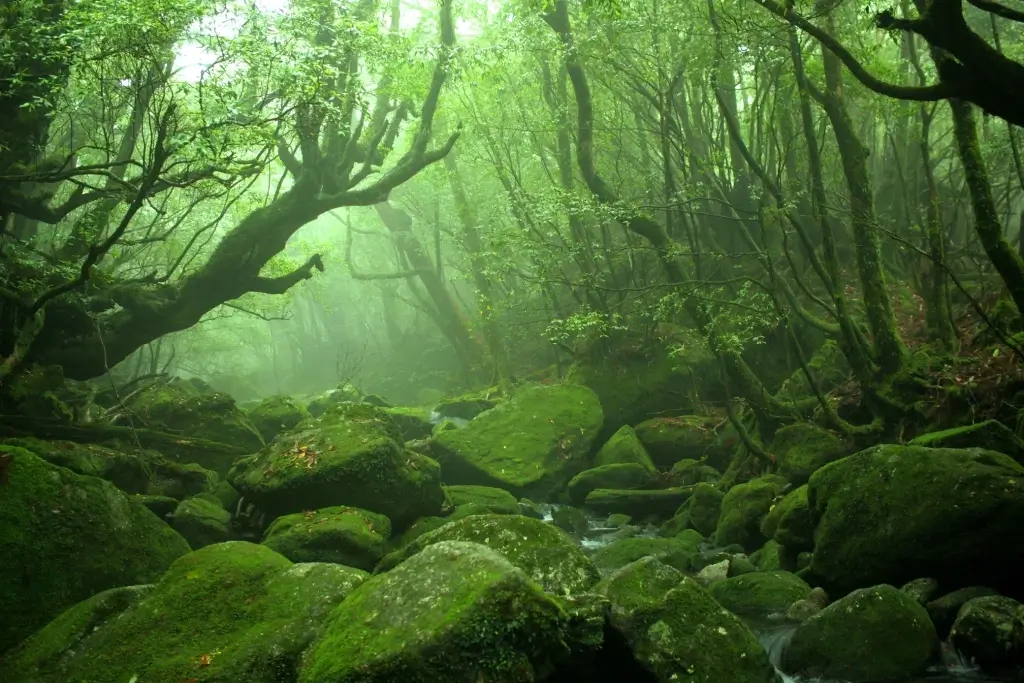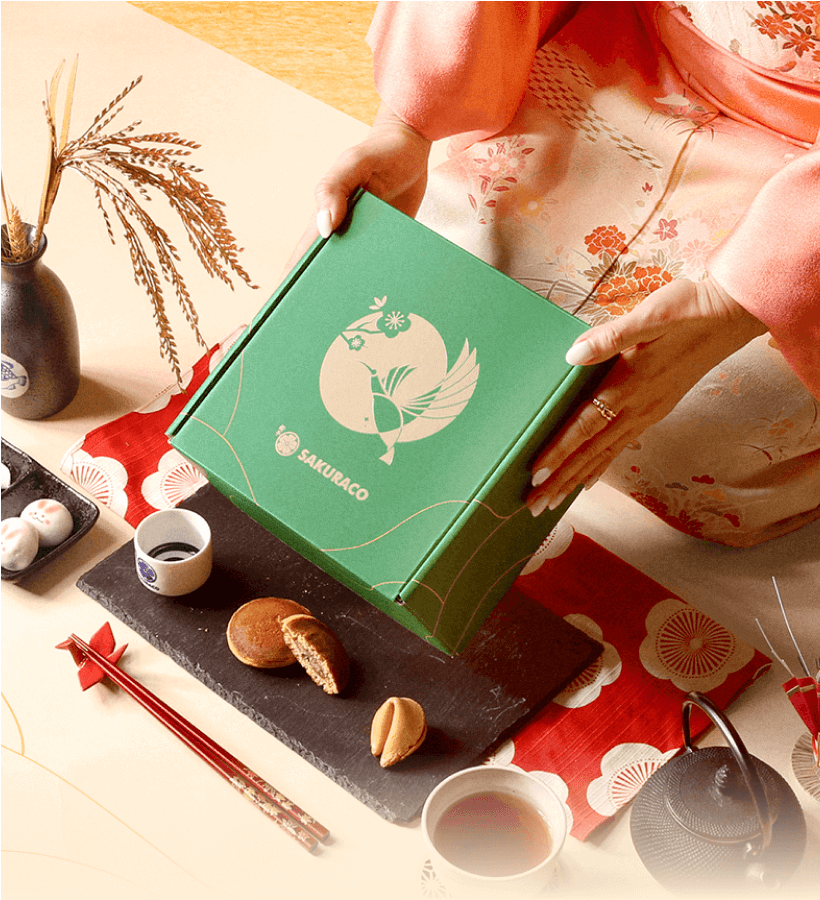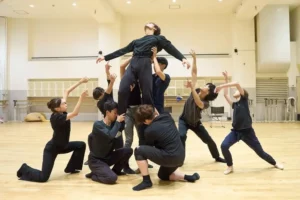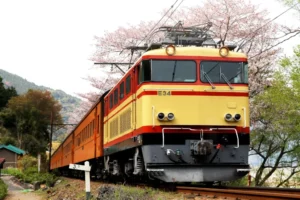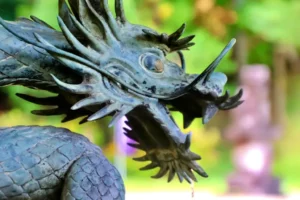Unlike many crowded tourist spots, Kyushu’s landscapes and towns often remain quiet and untouched, offering a more profound sense of place. Here, you can walk through ancient forests, visit historical shrines, and enjoy local festivals that reflect centuries of tradition. Let’s explore some of the most well-known places on this beautiful island, starting with Yakushima!
Table of Contents
ToggleYakushima
Far out in the sea, south of Kyushu, there’s a special round island called Yakushima. It is covered in thick green forests and tall mountains and is famous for its ancient yakusugi cedar trees. Some of them are more than 1,000 years old! The oldest one, Jomon Sugi, might be over 700 years old.
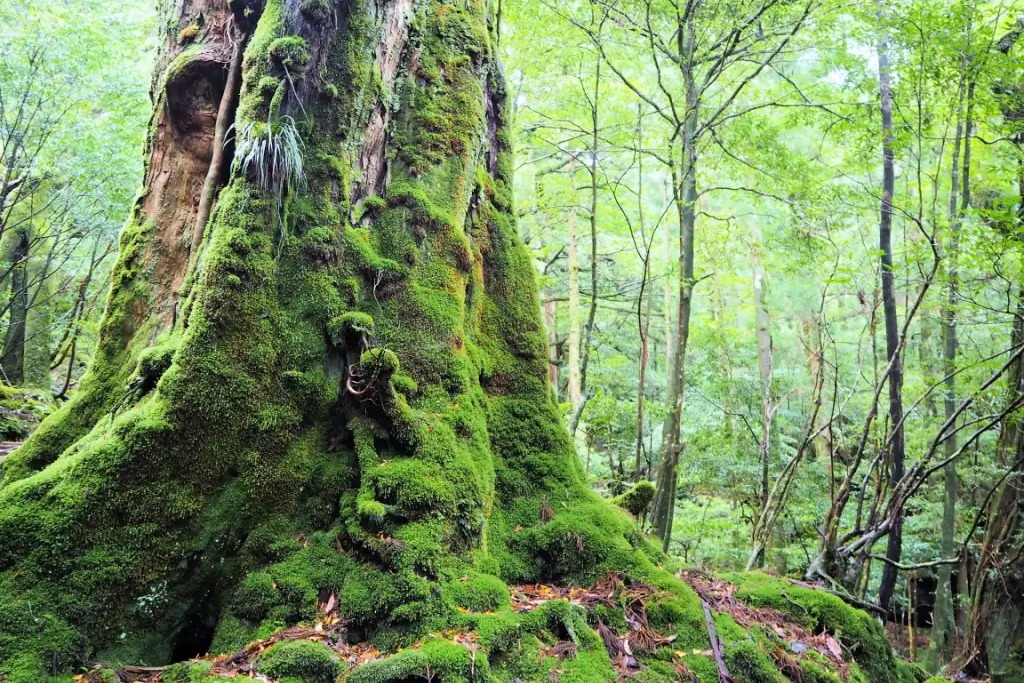
Yakushima has all kinds of weather—sometimes it’s sunny, but it rains almost daily! Because of this, the island is full of moss, streams, and waterfalls. There are even snowy spots in the mountains during winter. Mt. Miyanoura is the tallest mountain on the island, standing at 1,936 meters (6352 feet). The island has many different plants and animals, including the Yaku deer and Yaku monkeys, from beaches to high peaks.
Yakushima isn’t just about nature; people here celebrate the island too! During the Yakushima Goshinzan Festival, locals gather by the river to pray, splash sacred water, light bonfires, and play big taiko drums to thank the mountain gods. Around the island, shops sell tasty local food such as flying fish and bento lunches wrapped in bamboo leaves. Don’t forget to try the island’s shochu (a Japanese alcoholic beverage), especially the famous Mitake brand.
Uminonakamichi Seaside Park
Uminonakamichi Seaside Park is a vast and exciting park in Fukuoka City. It sits on a long, narrow strip of land between the sea and the bay. The military used this place long ago, but now it’s a fun park for everyone! This park is famous for its beautiful flowers that bloom all year. In spring, bright tulips and baby blue nemophila cover the ground like a colorful carpet. The cherry blossoms here are also beautiful, with over 2,000 sakura trees forming fluffy pink tunnels you can ride through on a bike.
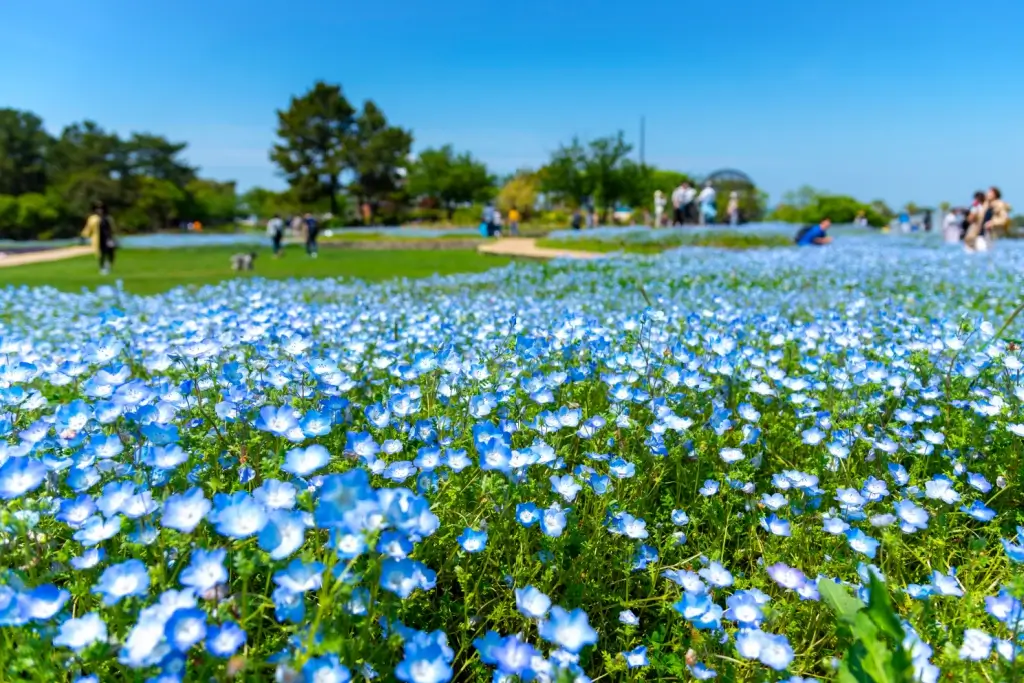
In the fall, you can enjoy roses and thousands of orange and pink cosmos gently swaying in the breeze. Special flower festivals include the Flower Picnic, Rose Festival, and the Big Cosmos Festival. The Sunshine Pool opens in summer with cool slides and pools just for kids. You can also visit a mini-zoo where you can meet cute animals. There’s also Wonder World, a small amusement park with fun rides, a Ferris wheel, and a giant bouncy trampoline. And if you’re not ready to go home, you can spend the night in a cozy dome tent at the park’s glamping area!
Are you looking for great snacks while enjoying your travels? Check out Sakuraco! Every month, Sakuraco delivers delicious Japanese snacks, teas, and sweets from Japan so you may enjoy them at home.
Cape Toi
Cape Toi is a special place at the tip of Miyazaki Prefecture. It lies along the Nichinan Coast, where the land stretches into the Pacific Ocean. One of the most exciting things about Cape Toi is the wild horses called Misaki-uma. These horses are not just ordinary; they are descendants of horses once raised by samurai over 300 years ago! Now, they roam freely on the green hills, munching on grass with the ocean breeze around them.
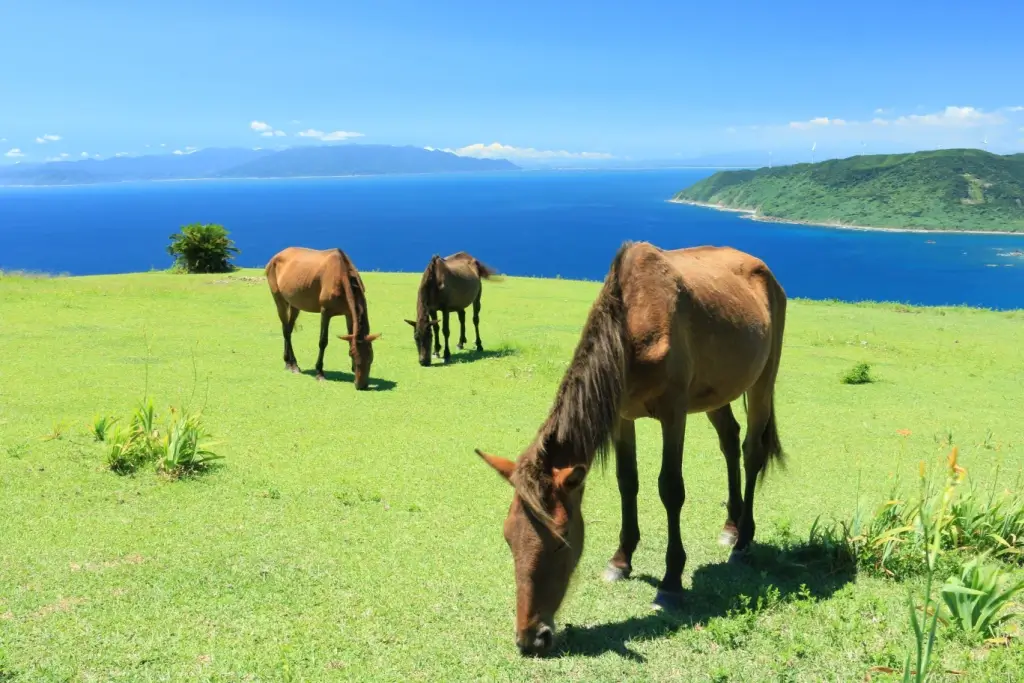
The cape is also home to the Cape Toi Lighthouse, a tall white tower that has stood since 1929. It helps safely guide ships and offers one of the best views in Kyushu. You can see far across the sea and the lush green land below from the top. It’s the only lighthouse in Kyushu that you can go inside and climb!
You can learn more interesting things at Pakalapaka, the Cape Toi Tourist Exchange Center. It displays the Misaki-uma and the history of Cape Toi. There’s also a hidden shrine called Misaki-jinja, built into the mountain in 708 CE! It is surrounded by jungle trees and stands out with its bright red color.
Dazaifu Tenmangu
Dazaifu Tenmangu is a charming shrine in Dazaifu, a small town outside Fukuoka City. It was established over 1,100 years ago to honor a wise man named Sugawara no Michizane. He loved learning, writing poems, and studying nature. After he passed away, people believed he became a powerful spirit named Tenjin, the god of learning. Because of this, students from all over Japan come here to pray for good luck on their exams!
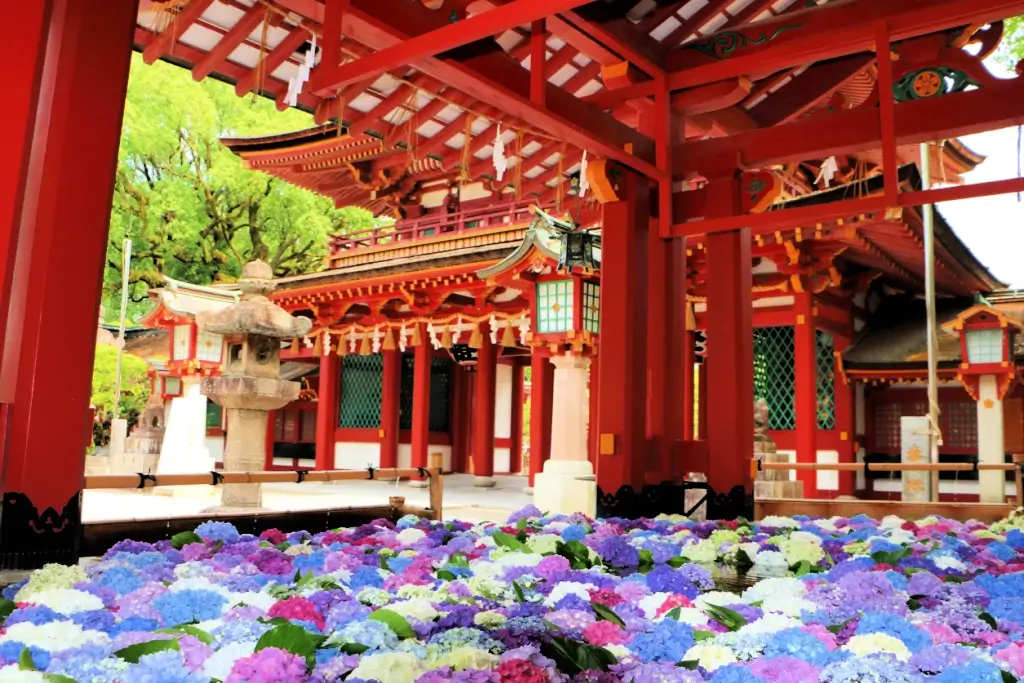
The shrine is surrounded by peaceful gardens with thousands of plum trees, and they bloom with pink and white flowers every February and March. There are also old camphor trees that stretch their branches wide, creating lots of shade. A heart-shaped pond and three red bridges greet visitors at the entrance, and each bridge symbolizes the past, present, and future.
When you visit, you can explore the main shrine, buy colorful good-luck charms, and write your wishes on wooden plaques. You can also enjoy yummy local treats like umegae mochi, a warm rice cake with sweet red bean paste inside.
Yoshinogari Historical Park
Yoshinogari Historical Park was built during the Yayoi Period (300 BC—250 CE). It was once a huge village with tall watchtowers, homes dug into the ground, and even a place where kings might have ruled. The park is filled with cool rebuilt houses, towers, and storehouses.
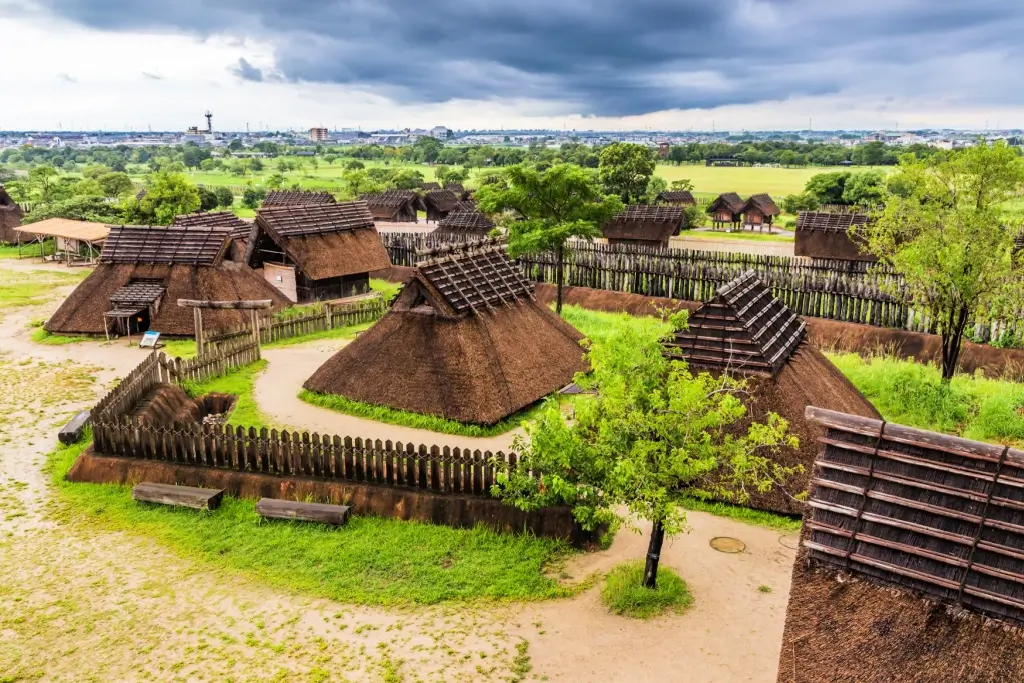
You can visit different villages inside the park, such as the Minami Naikaku, where the king probably lived, or the Kita Naikaku, which has a large shrine and ceremonial sites.. There are workshops where you can try ancient crafts, like making fire by rubbing sticks together or carving colorful magatama stones into shiny necklaces. You can also check out museums filled with real things from the Yayoi people, including pots, clothes, and tools.
Besides learning, there’s a lot of space to play and relax. You can run around on vast grassy fields, ride the roller slide, or climb the fluffy dome in the Ancient Field Zone. You can also stop by the restaurant and souvenir shop near the east gate when you get hungry or want to take home a memory.
Why should I visit these popular tourist sites in Kyushu?
Visiting these popular places in Kyushu invites you to explore more than just scenery. Each spot holds its quiet charm! You might walk through the ancient forests of Yakushima, watch wild horses at Cape Toi, or explore the peaceful grounds of Dazaifu Tenmangu. Nature, history, and daily life quietly unite in powerful ways in these destinations. So, which site would you like to visit first, and why? Let us know in the comments.

